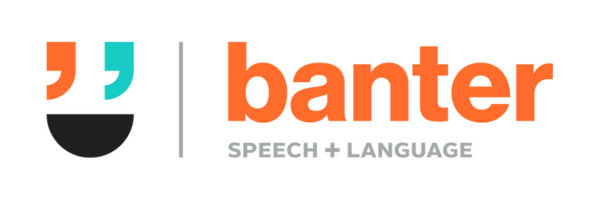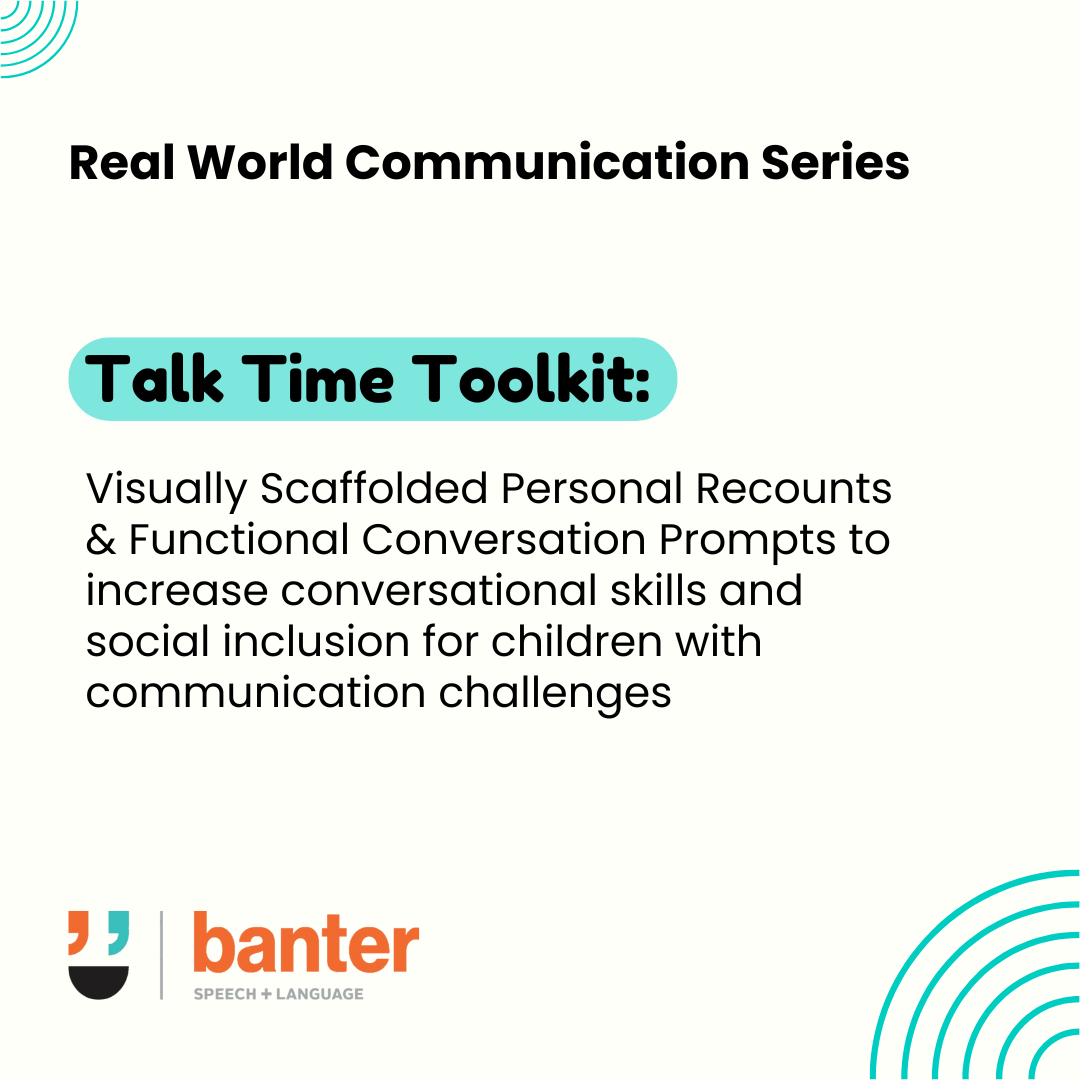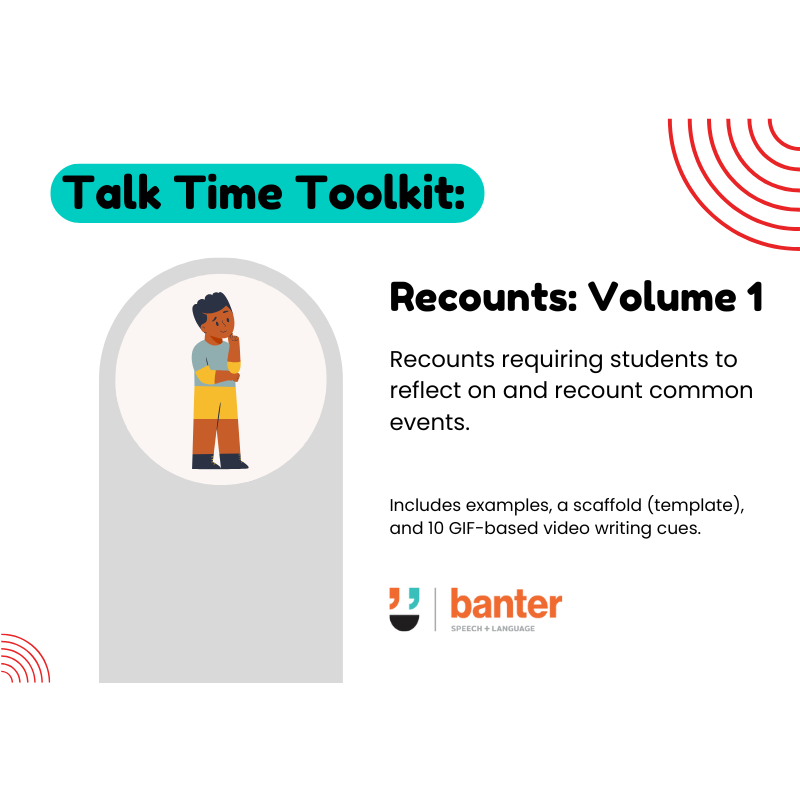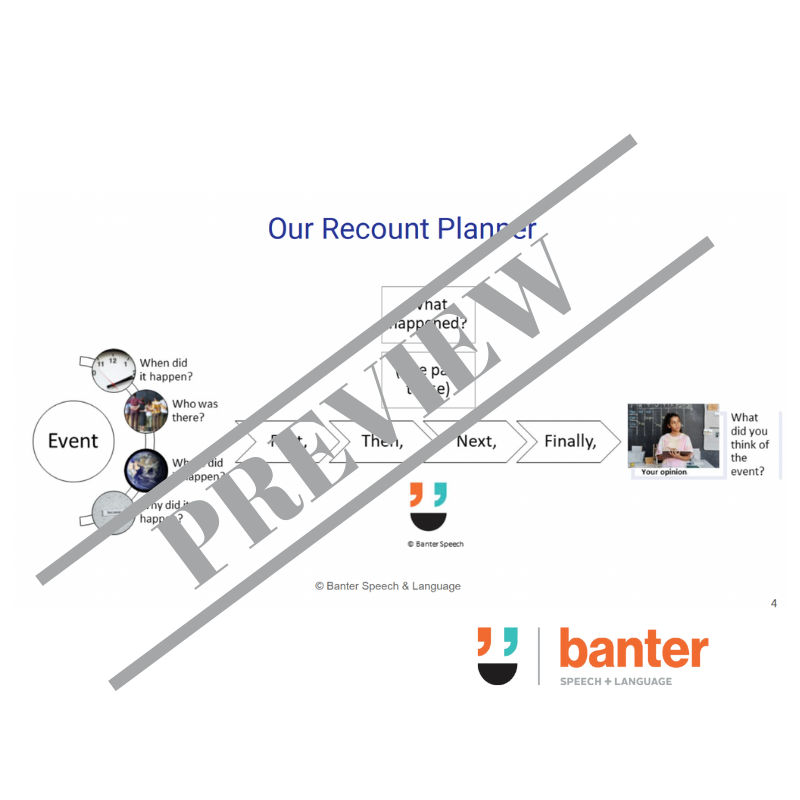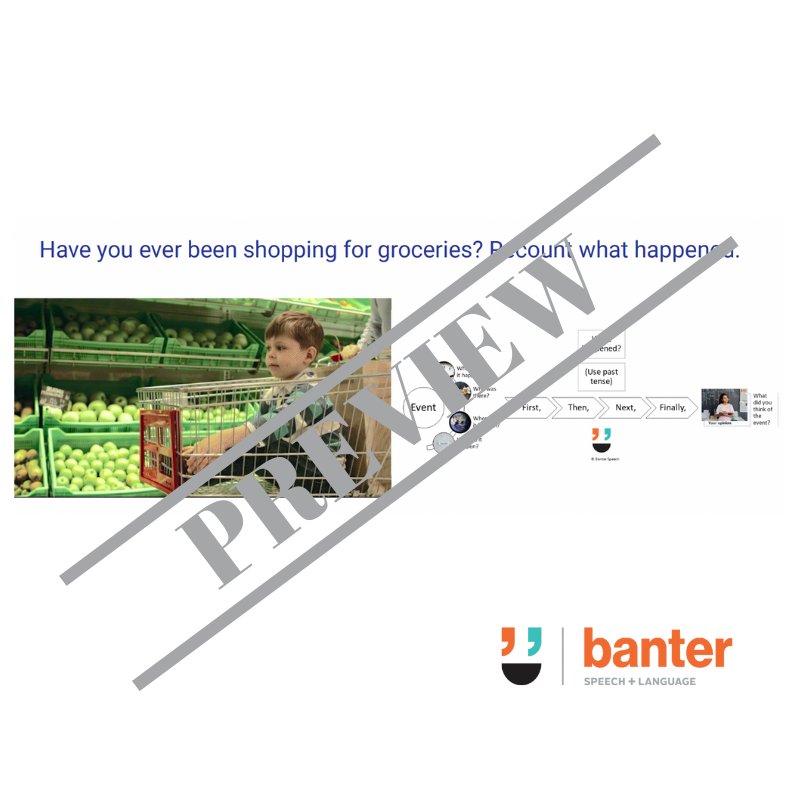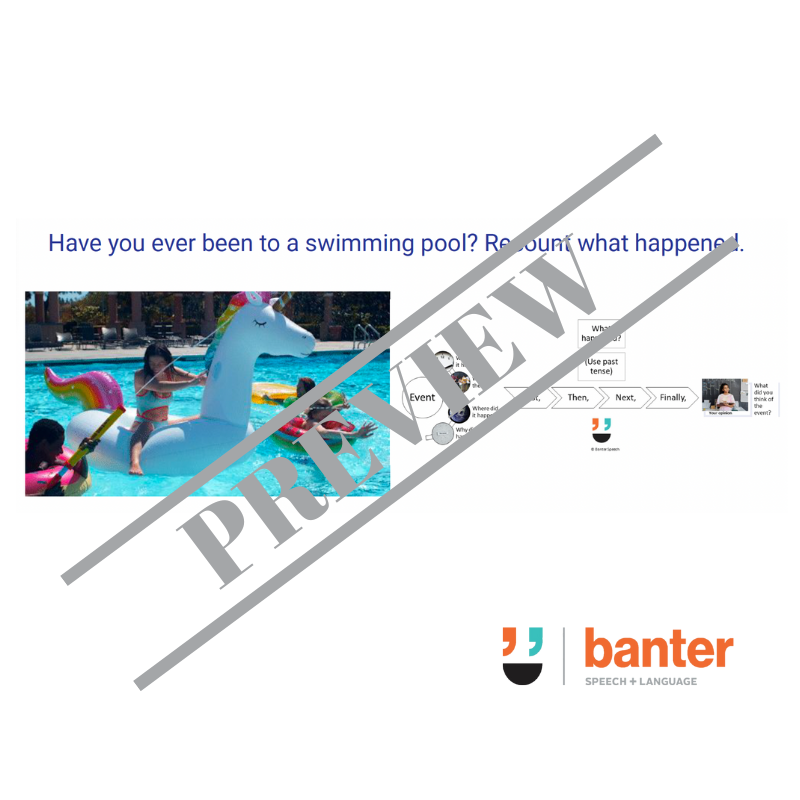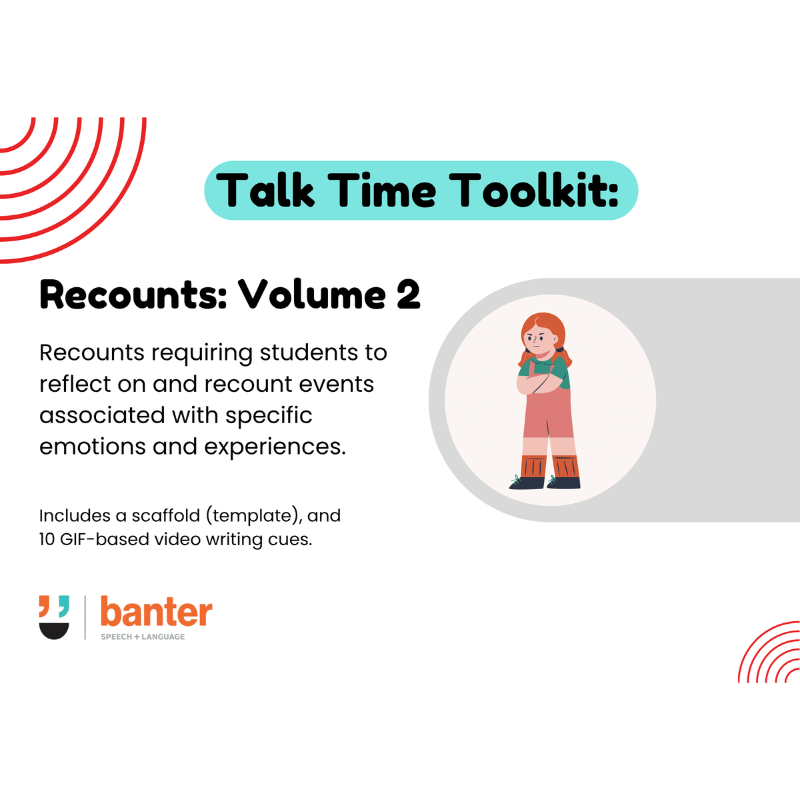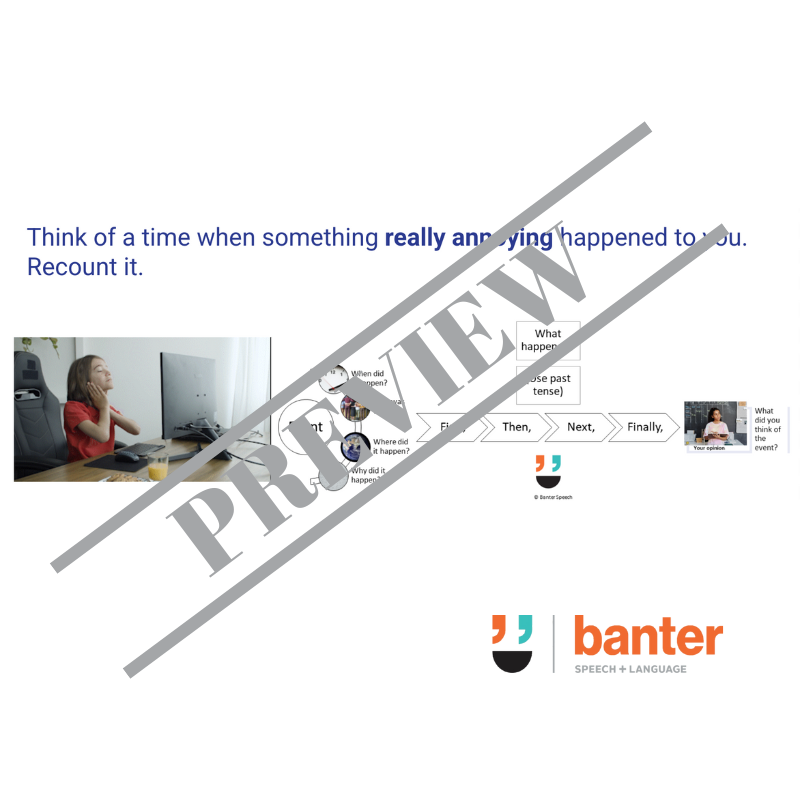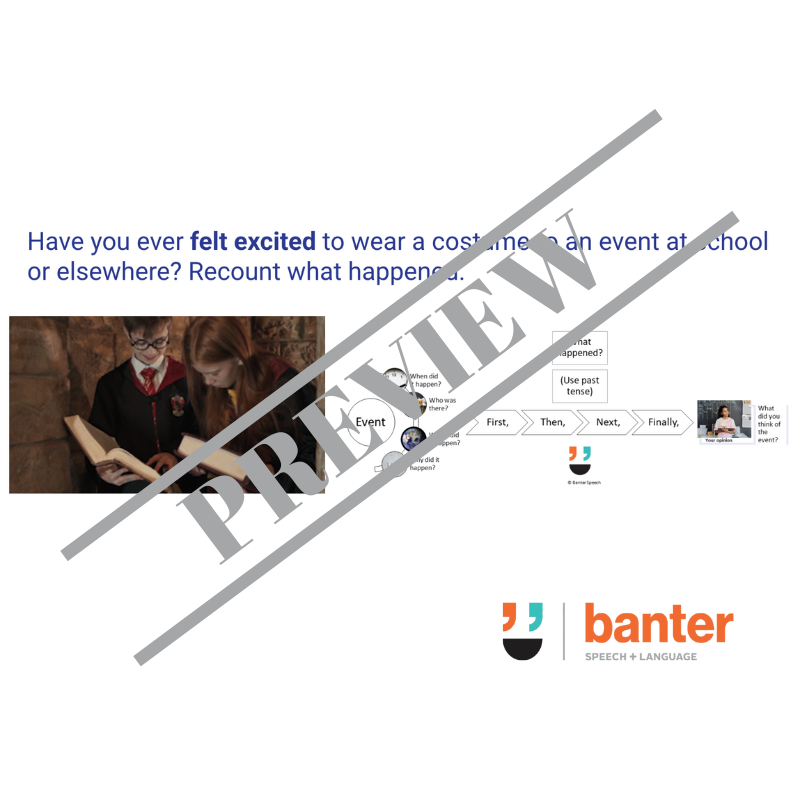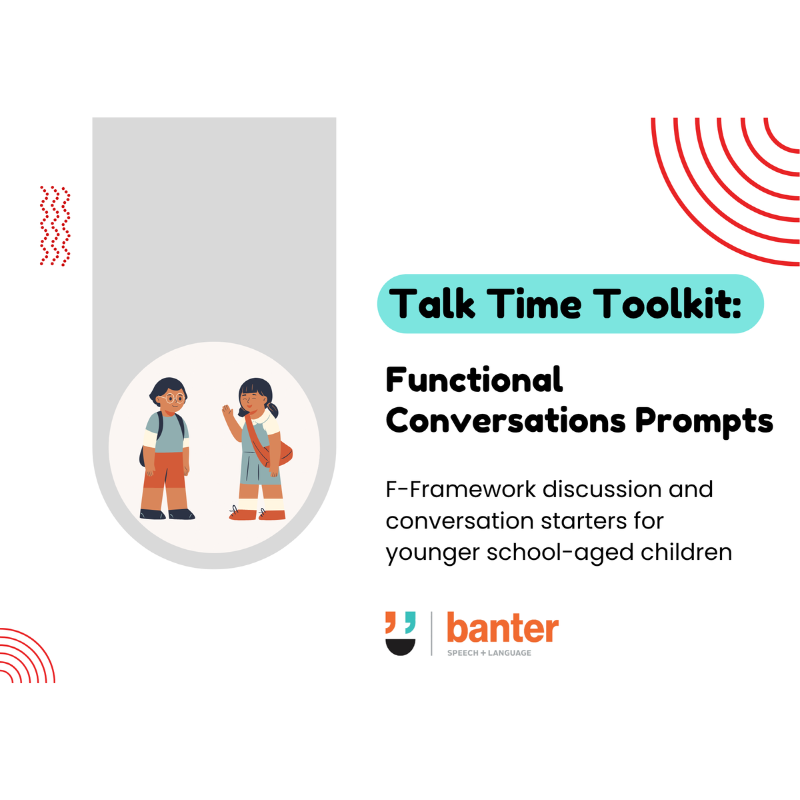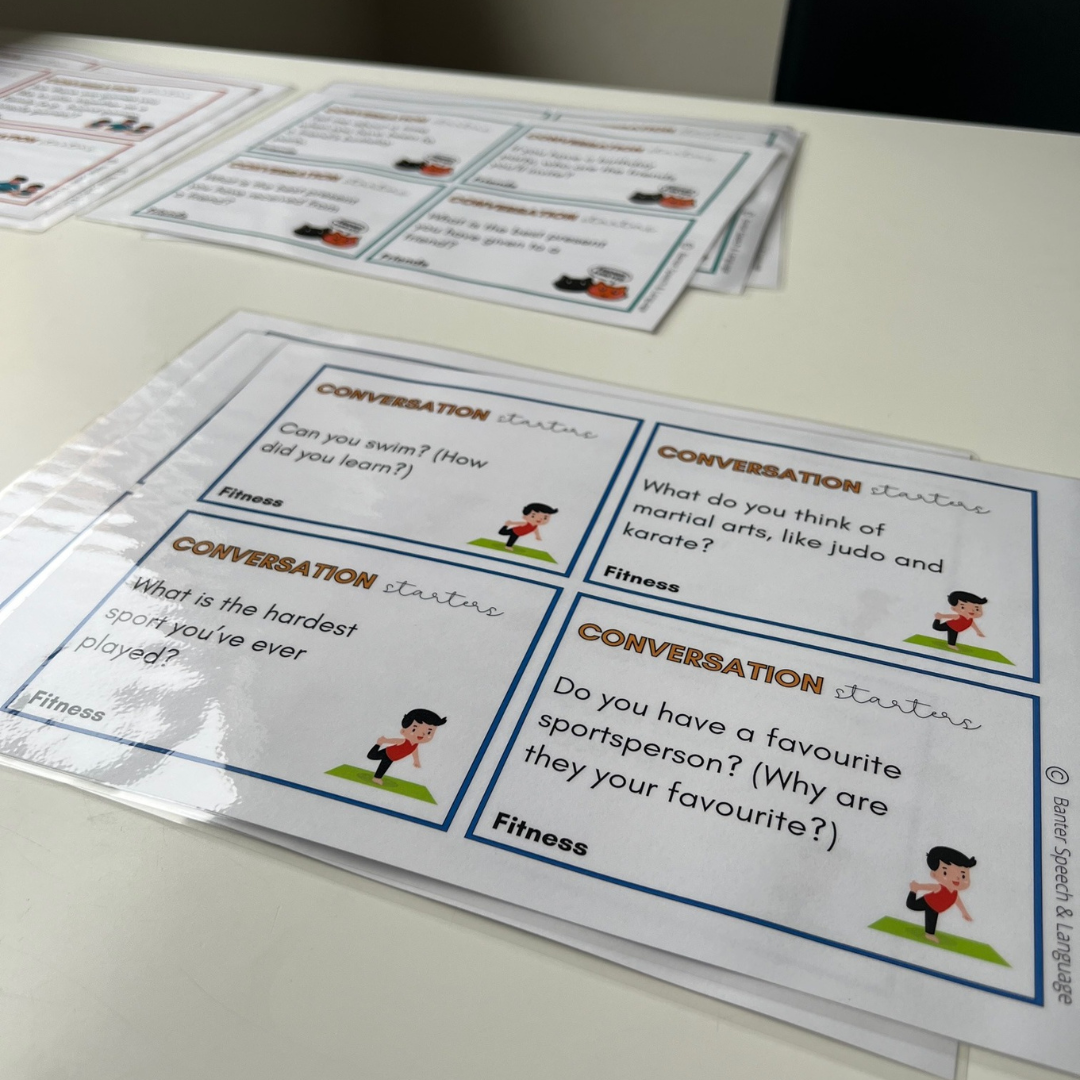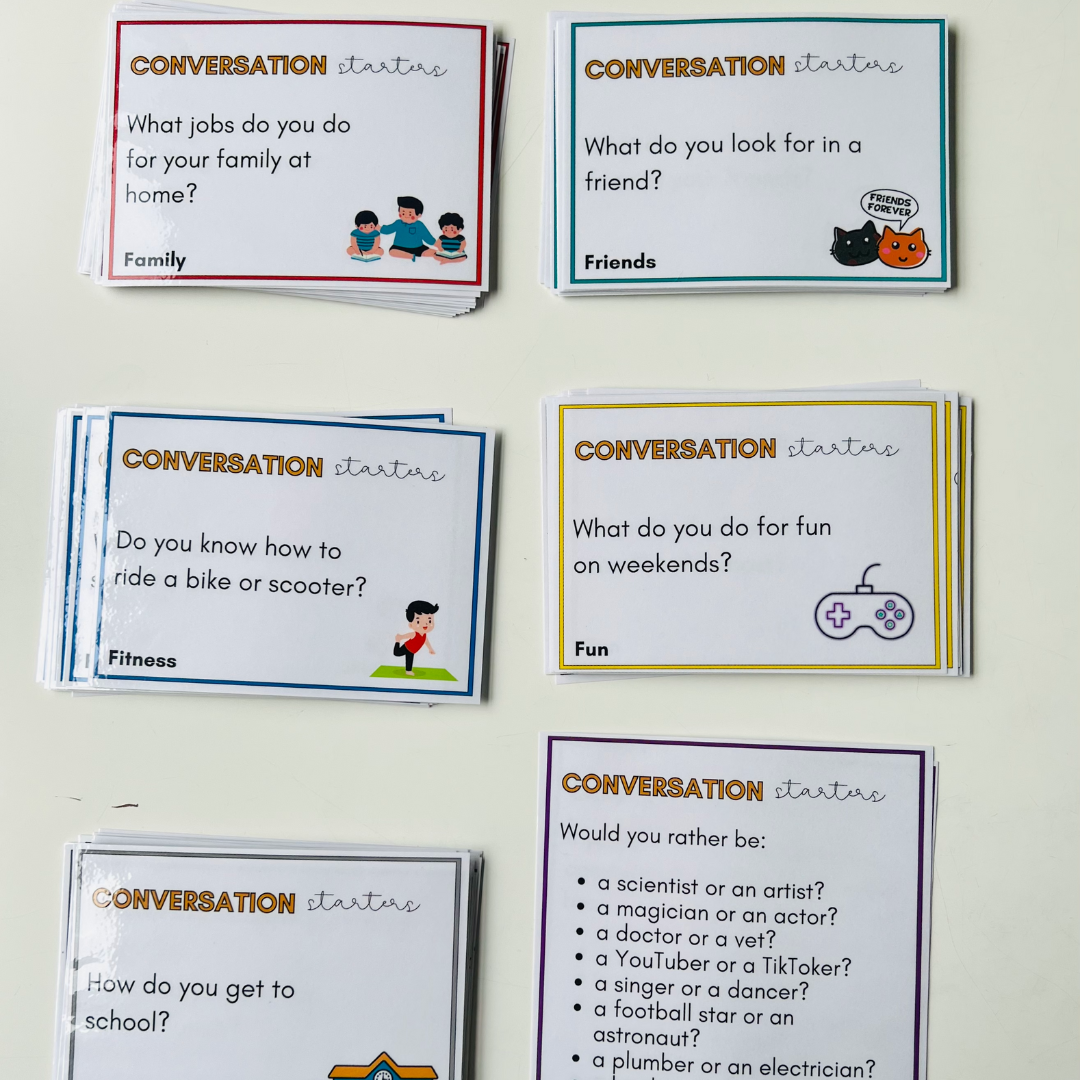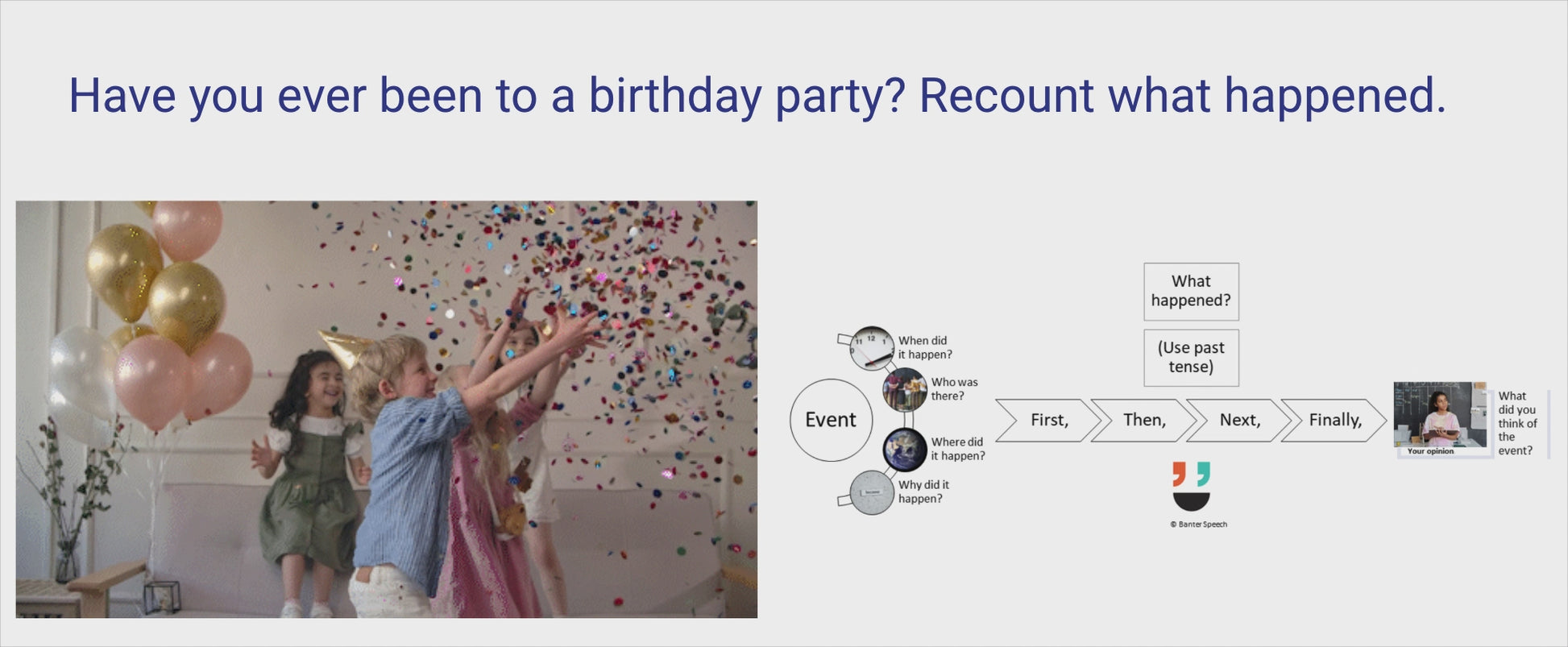Banter Speech & Language
Talk Time Toolkit
Talk Time Toolkit
Couldn't load pickup availability
Introducing our Talk Time Toolkit: Visually Scaffolded Personal Recounts and Functional Conversation Prompts to increase conversational skills and social inclusion for children with communication challenges.
Where to start: Let the child choose a visual prop or prompt linked to something they want to talk about, see the toolkit e g.:
- photographs of different events (e.g. parties, excursions, holiday or day trips, etc.);
- favourite picture books, video games, iPad apps, or YouTube clips;
- visual oral recount scaffolds linked to common life events, activities of daily living, or strong emotions; and
- conversation starter prompts linked with functional life domains or activities (e.g., family, friends, health and fitness, fun activities, preschool/school, future goals).
What to do:
- Ask the child open questions (e.g. “What happened that day?”, “Tell me about a time you did [activity]).
- Give the child lots of time to respond.
- As soon as the child responds, affirm and recast their answers using grammatically correct and complete sentences (see further reading links for more details).
- Optionally, use explicit instruction and prompts (words and gestures) to encourage the child to reformulate their original utterance following your example. (This might be helpful for children with very severe expressive language challenges.)
- Ask the child for further information using question prompts (e.g. who, what, where, when, how and why prompts), and/or the visual scaffolding (e.g., first, next, then, finally cues).
Targets: Focus on recasting (saying) language elements that help children combine words and speak in grammatically complete sentences:
- Verbs (e.g. ask, know, go, come, put, let, bring, take, buy, give, have, turn, get, make, find, call, remember, stay, touch).
- Personal pronouns (e.g. me, my, you, your, he, him, his, her, she, it, they, them, their).
- Bound morphemes (e.g., plural -s, third person -s, -ed, and -ing).
- Adverbs (e.g. again, now, here, more, there, very, after).
- Prepositions (e.g., in, on, with, of, for, out, at, up and over).
- Determiners (e.g. the, that, a, an).
- Conjunctions (e.g. and, but, so, because, if, while).
- Question words (e.g. who, what, when, where, how, why).
- Functional nouns (e.g. friend, game, morning).
To support people with additional language and learning needs, the cues feature topics that require a minimal amount of background knowledge, and the examples and scaffold are designed to help model and support students of all abilities.
Share











